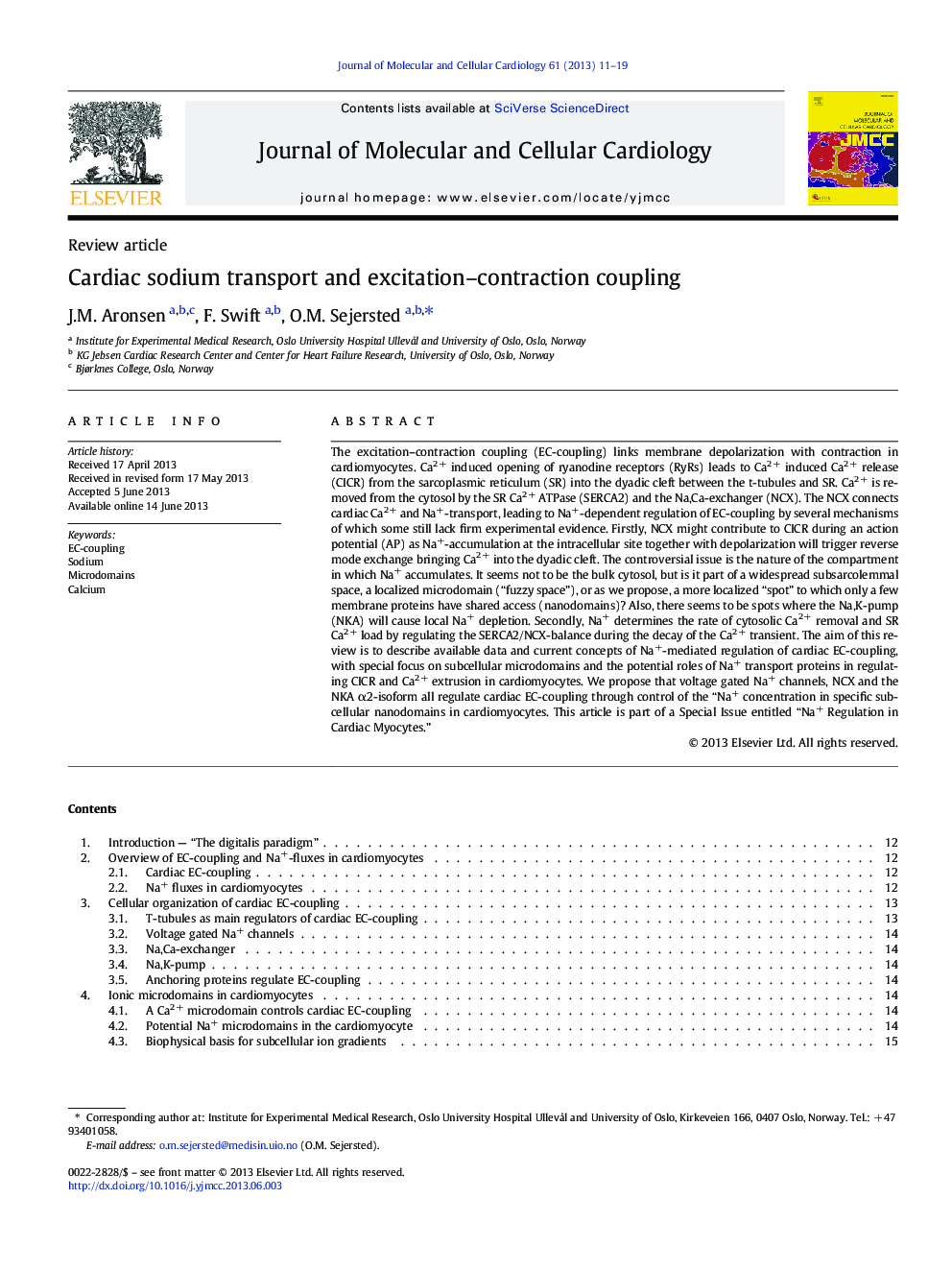| Article ID | Journal | Published Year | Pages | File Type |
|---|---|---|---|---|
| 8475132 | Journal of Molecular and Cellular Cardiology | 2013 | 9 Pages |
Abstract
The excitation-contraction coupling (EC-coupling) links membrane depolarization with contraction in cardiomyocytes. Ca2 + induced opening of ryanodine receptors (RyRs) leads to Ca2 + induced Ca2 + release (CICR) from the sarcoplasmic reticulum (SR) into the dyadic cleft between the t-tubules and SR. Ca2 + is removed from the cytosol by the SR Ca2 + ATPase (SERCA2) and the Na,Ca-exchanger (NCX). The NCX connects cardiac Ca2 + and Na+-transport, leading to Na+-dependent regulation of EC-coupling by several mechanisms of which some still lack firm experimental evidence. Firstly, NCX might contribute to CICR during an action potential (AP) as Na+-accumulation at the intracellular site together with depolarization will trigger reverse mode exchange bringing Ca2 + into the dyadic cleft. The controversial issue is the nature of the compartment in which Na+ accumulates. It seems not to be the bulk cytosol, but is it part of a widespread subsarcolemmal space, a localized microdomain (“fuzzy space”), or as we propose, a more localized “spot” to which only a few membrane proteins have shared access (nanodomains)? Also, there seems to be spots where the Na,K-pump (NKA) will cause local Na+ depletion. Secondly, Na+ determines the rate of cytosolic Ca2 + removal and SR Ca2 + load by regulating the SERCA2/NCX-balance during the decay of the Ca2 + transient. The aim of this review is to describe available data and current concepts of Na+-mediated regulation of cardiac EC-coupling, with special focus on subcellular microdomains and the potential roles of Na+ transport proteins in regulating CICR and Ca2 + extrusion in cardiomyocytes. We propose that voltage gated Na+ channels, NCX and the NKA α2-isoform all regulate cardiac EC-coupling through control of the “Na+ concentration in specific subcellular nanodomains in cardiomyocytes. This article is part of a Special Issue entitled “Na+ Regulation in Cardiac Myocytes.”
Keywords
Related Topics
Life Sciences
Biochemistry, Genetics and Molecular Biology
Cell Biology
Authors
J.M. Aronsen, F. Swift, O.M. Sejersted,
